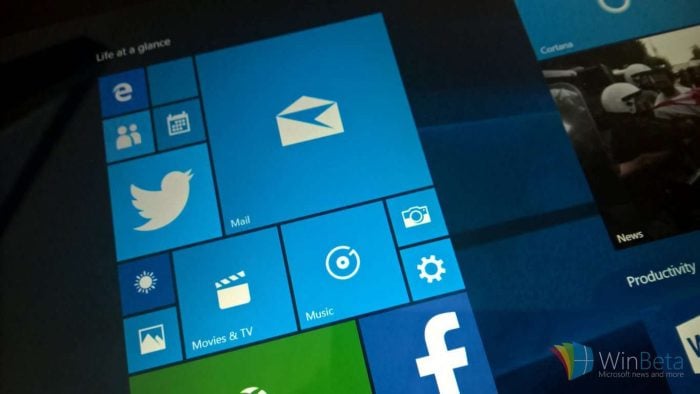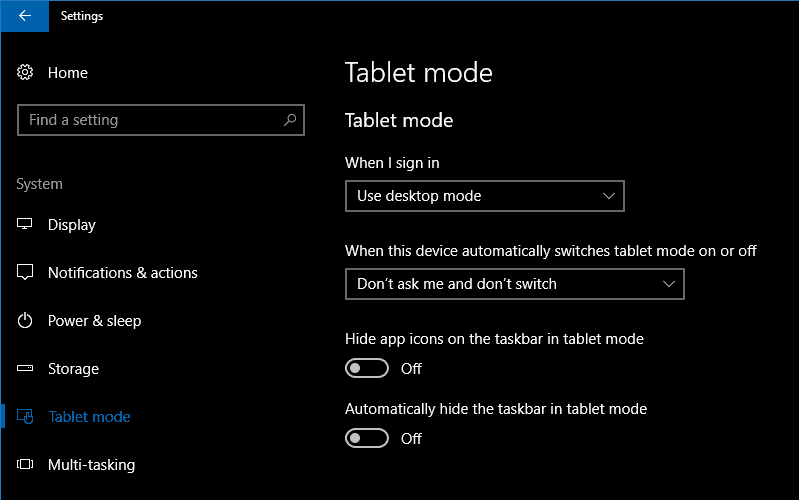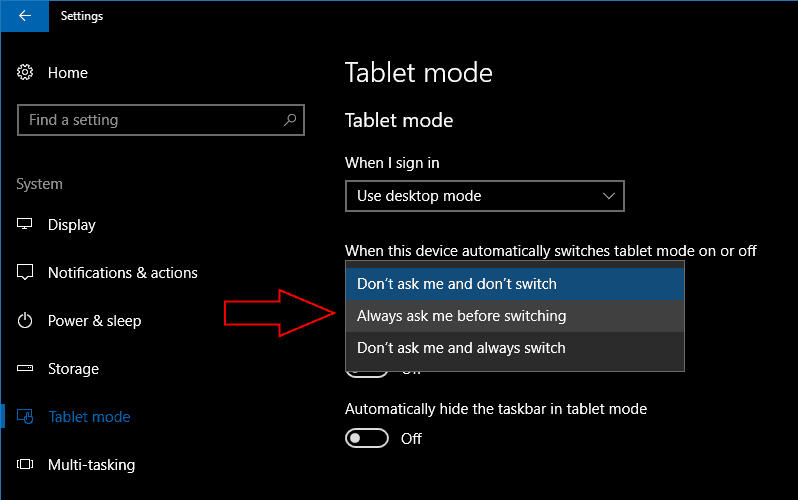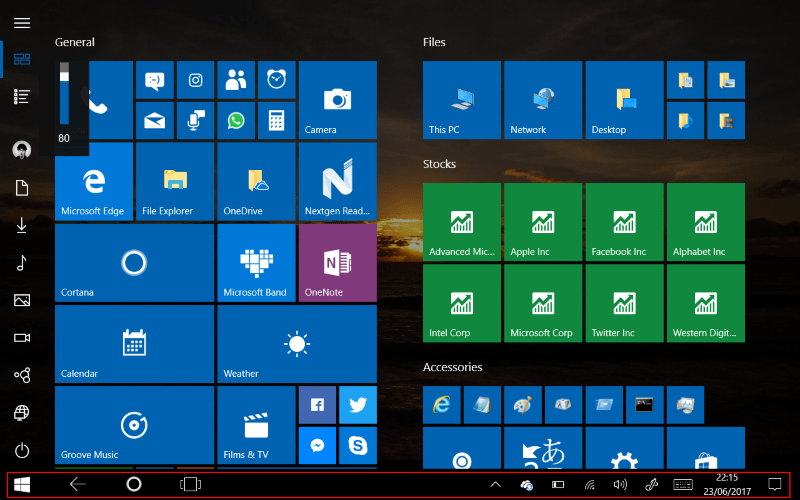How to customise your tablet mode experience on Windows 10 convertibles
3 min. read
Published on
Read our disclosure page to find out how can you help Windows Report sustain the editorial team Read more

Windows 10’s tablet mode feature lets you use the operating system with a full screen Start experience. It’s similar to the Start screen of Windows 8, putting everything within reach when you’re using touch as your primary input method. Windows can automatically disable tablet mode when you connect a keyboard, letting you seamlessly switch between the Start screen and complete desktop.
If you’re using a touch-enabled device, tablet mode will probably be enabled by default. If it’s not, you can activate it manually using the “Tablet mode” quick toggle in Action Center. On convertible PCs like Microsoft’s Surface Pro, tablet mode should be setup to revert to the desktop when a keyboard is connected. To change this behaviour, open the Settings app to the “System” category and “Tablet mode” page.
On this screen, you’ll see all the settings related to tablet mode. The first dropdown option, “When I sign in,” lets you choose whether tablet mode should be enabled by default when you start your device. The options are “Use tablet mode,” “Use desktop mode” and “Use the appropriate mode for my hardware.” The latter will let Windows choose whether to use tablet mode, based on whether desktop input methods such as a mouse and keyboard are connected.
You can change what happens when you attach or remove a keyboard or dock with the “When this device automatically switches tablet mode on or off” dropdown. The “Don’t ask me and don’t switch” option will ignore the change to your device’s configuration, keeping your device in the mode you were previously using. “Don’t ask me and always switch” will do the opposite, always switching the mode without first prompting you. If you’re looking to control the switch yourself, use the “Always ask me before switching” option to get a notification each time that lets you decide whether to toggle tablet mode’s state.
The two buttons at the bottom of the page let you customise tablet mode itself. You can hide the taskbar in tablet mode apps with “Automatically hide the taskbar in tablet mode.” This gives you an experience reminiscent of Windows 8, allowing the running app to utilise the entirety of your display. You can still swipe up from the bottom of the screen to view the taskbar.
The other toggle, “Hide app icons on the taskbar in tablet mode,” will strip the taskbar of running app icons. You’re left with just the system tray and Cortana and Task View buttons. This gives you a less cluttered taskbar on smaller tablet sizes. It also leads to a more unified and minimal look by removing the disparate shapes and colours of app icons.
Tablet mode doesn’t have many settings you can change. What is available allows you to create a Windows tablet experience that better suits your own usage. By combining the settings, you can create an experience close to that of Windows 8 when using your device with touch. It can then automatically pivot to a full desktop PC when you dock it to a desktop, offering a better representation of the “2-in-1” concept. Microsoft hasn’t changed tablet mode since the launch of Windows 10 so it’s possible more features could arrive in the coming months, with or beyond the Fall Creators Update.











